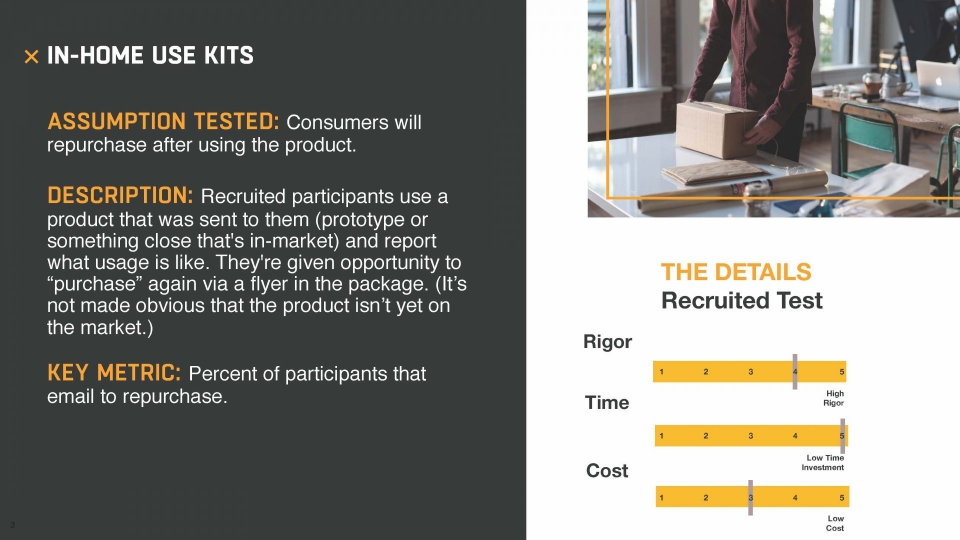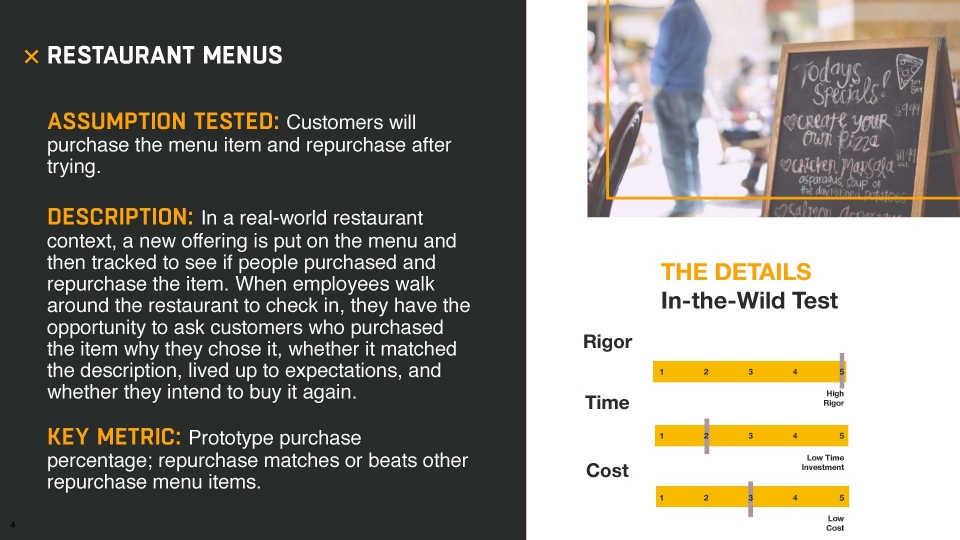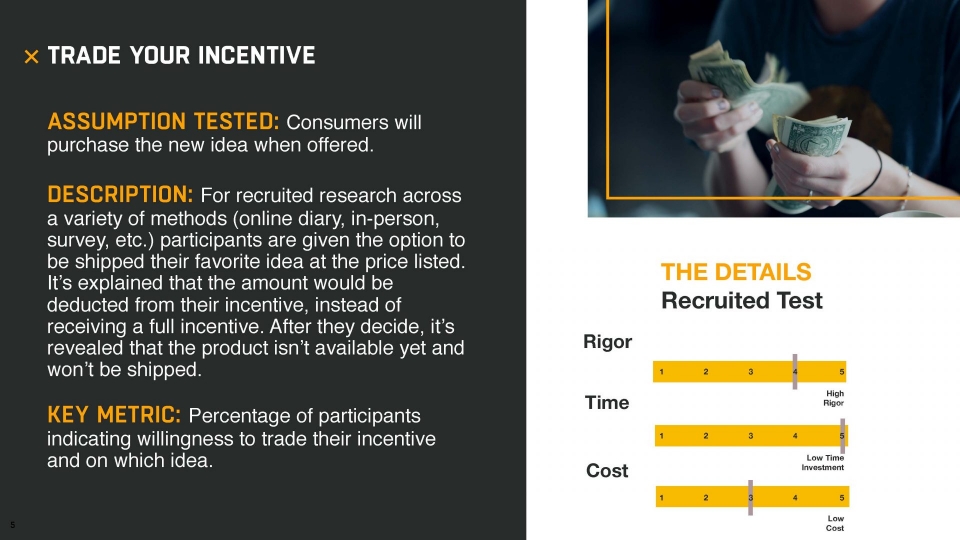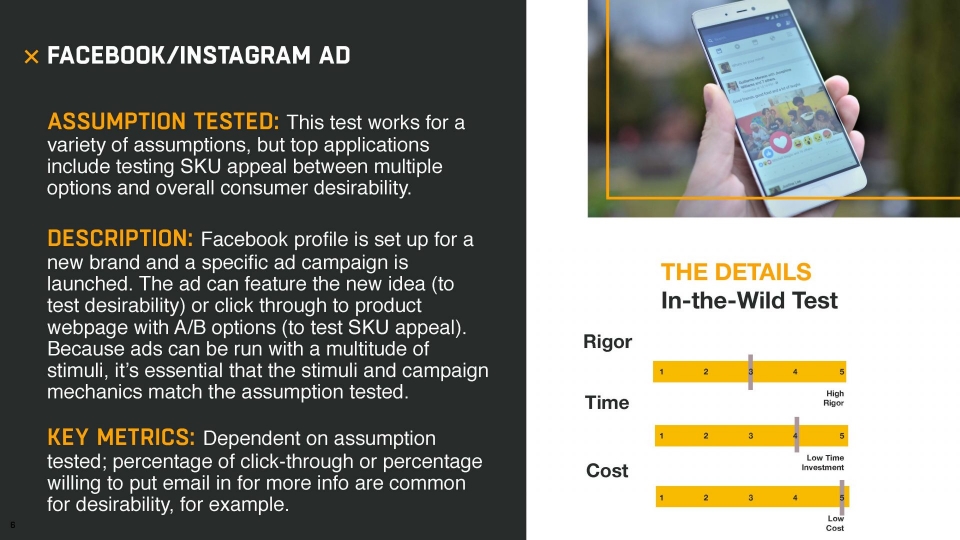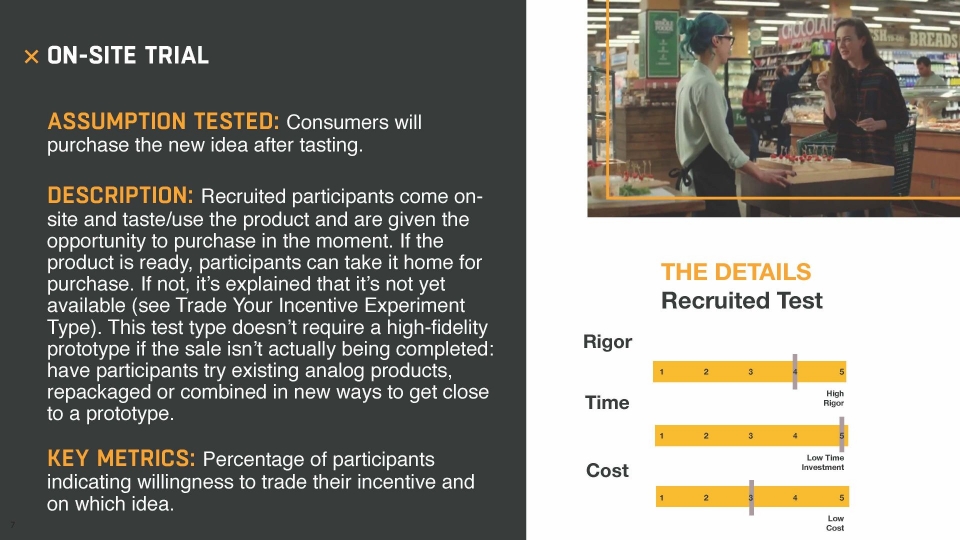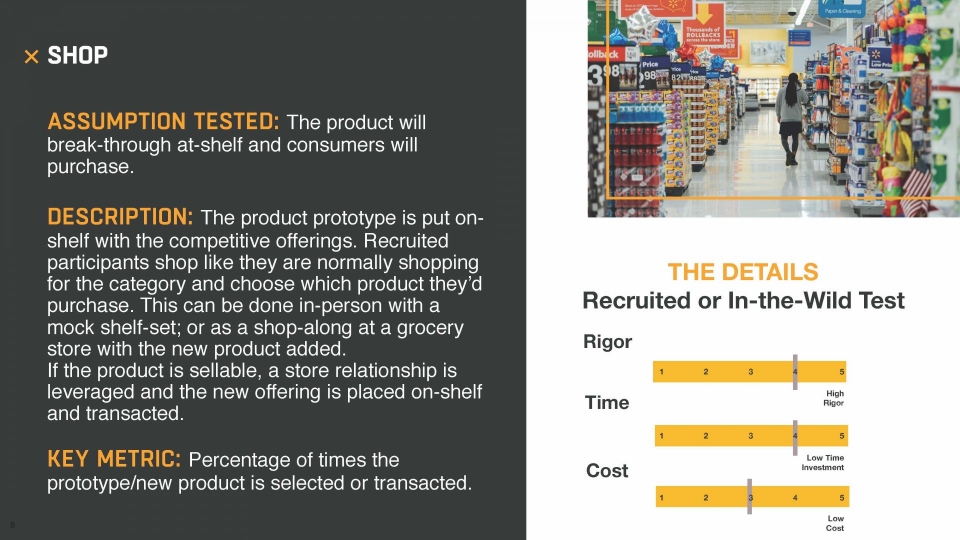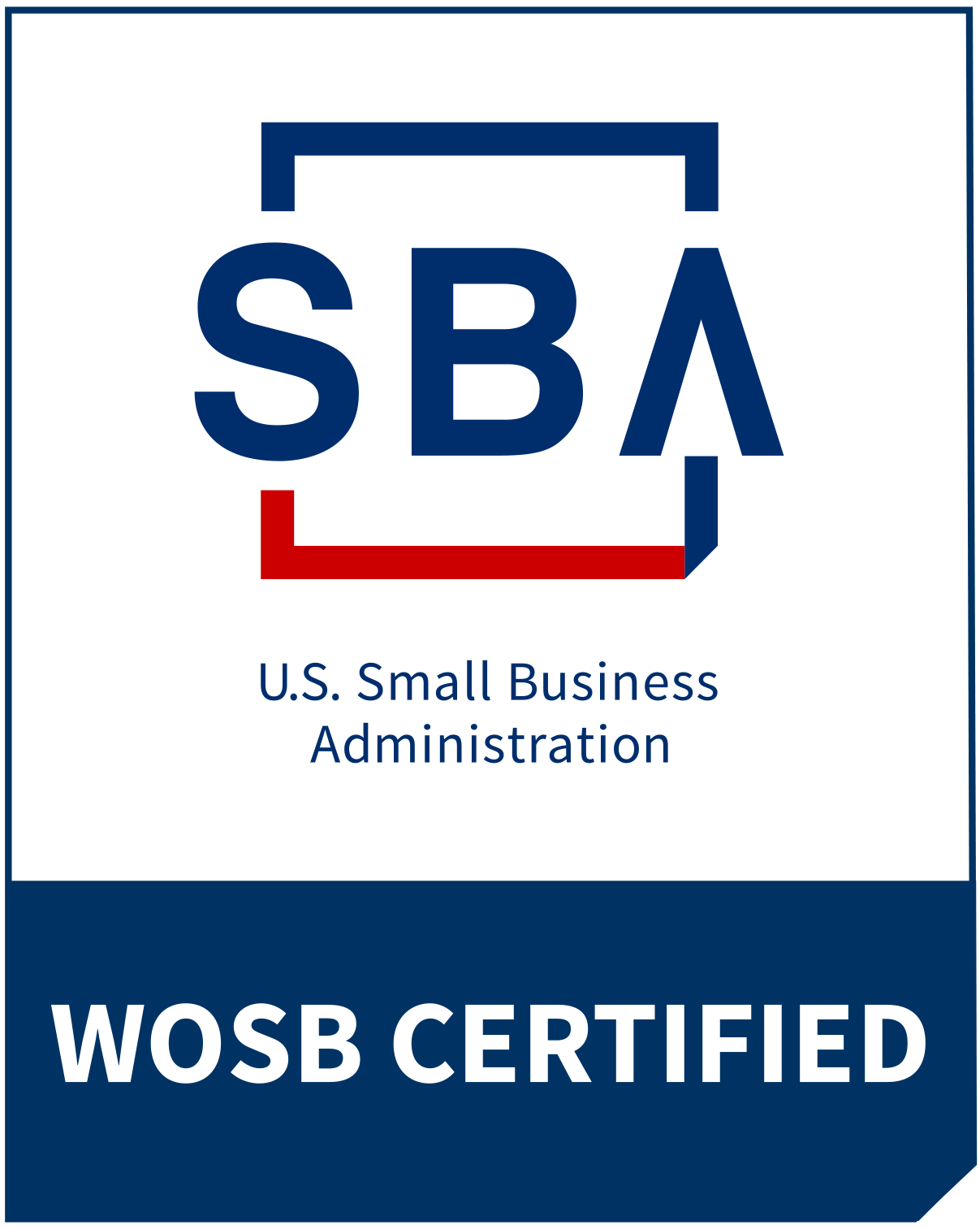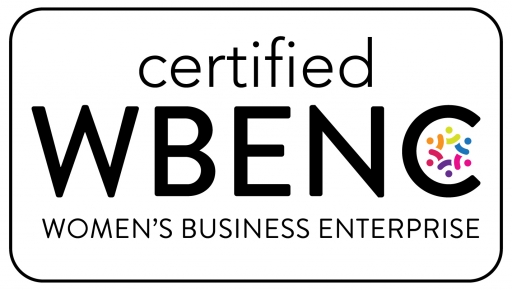In this VUCA world, one test to validate an idea is no longer sufficient. More and more BigCo leaders are looking for testing methods that will help them reduce risk and build confidence before they make big capital decisions that could have significant implications to their brands and business.
These factors, along with advances in behavioral science and tech-driven solutions, are coming together to influence Lean Research that is experiment-driven and focused on setting up faster, cheaper, smarter experiments to see what consumers will do in response to an offer, a new product in their hands, or another behavioral way to test the critical, riskiest assumption.
As we talk with BigCo leaders, these shifts in research paradigms have provoked lots of questions about how exactly these types of experiments come to life. To help guide your learning journey on leaner, smarter approaches, we’ve compiled a few examples of experiments conducted for client challenges we’ve faced in the past 6 months.
Here is one example: Facebook/Instagram Ad – In the Wild Test
This test is medium rigor, relatively low time investment, and very low cost.
Assumption Tested: This test works for a variety of assumptions, but top applications include testing SKU appeal between multiple options and overall consumer desirability.
Description: Facebook profile is set up for a new brand and a specific ad campaign is launched. The ad can feature the new idea (to test desirability) or click through to the product webpage with A/B options (to test SKU appeal). Because ads can be run with a multitude of stimuli, it’s essential that the stimuli and campaign mechanics match the assumption tested.
Key Metrics: Dependent on assumption tested; the percentage of click-through or percentage willing to put email in for more info are common for desirability, for example.
See below or download the report to see more of the examples.
How did we construct these experiments?
When thinking about the type of experiment to run, what’s most important to remember is that experiments MUST be constructed to specifically test the riskiest assumption, or the element of the idea or business model that poses most risk to the desirability, viability, or feasibility of the idea.
There isn’t a one-size-fits-all experiment method for testing all riskiest assumptions. In fact, that’s why we moved away from thinking about this as “MVP testing” or testing a minimum viable product— that method still wasn’t laser-focused on testing the riskiest assumption.
That being said, we’ve found that when we’re teaching our clients this new way of lean research, example experiments go a long way in illustrating how this all works. As you read through this report, each example features a quick read on some of our experiment criteria: how high rigor, low cost, low time the experiment is and whether it’s a recruited research method or “in-the-wild.”
If you’re interested in learning more:
Learn more about the core set of principles when thinking about what sort of experiment to construct to test your riskiest assumption (or biggest risk to your business model’s desirability, viability, or feasibility.)
Learn about how Assumption Based Development is different than other, more traditional testing methods.
Watch a Webinar Video Case Story to learn more about transactional learning in practice. Specifically, hear more about how Cargill leveraged an on-menu experiment.
See how 6 startups tested their riskiest assumptions. How can you leverage these types of experiments in your BigCo environment?
Reach out! We’d love to do a lunch and learn with your team to start to inspire adoption of these startup-inspired, lean experimentation methods.
